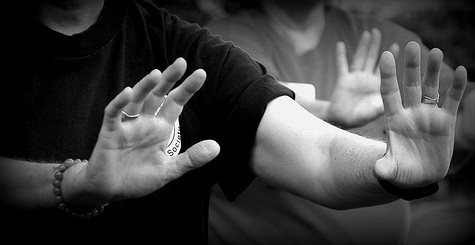Alternative Therapies
- Alternative Medicine
- Access Bars
- Acupressure
- Acupuncture
- Angel Healing
- Ayurveda
- Bach Flower Remedies
- Breathwork
- Cosmetic Acupuncture
- Crystal Healing
- Cupping Therapy
- Emotional Freedom Technique (EFT)
- Ergonomics
- Face Reading
- Fengshui
- Geopathic Stress
- Graphology
- Heal Your Life
- Holistic Solutions
- Holy Fire Reiki
- Homeopathy
- Hypnotherapy
- Jesus Reiki
- Jikiden Reiki
- Lama Fera
- Law of Attraction
- Manual Therapy
- Meditation
- Motivational Counseling
- Mudra Healing
- Nakshatra Energies
- Naturopathy
- Neuro Linguistic Programming (NLP)
- Panchakarma (Ayurveda)
- Panchkarma Holistic Healing - Mind Control
- Past Life Regression
- Physiotherapy
- Pranic Healing
- Pyramids
- Reiki
- Rudraksh
- Silva Mind Control Method
- Sujok therapy
- Switchwords
- Symphony of Possibilities
- Tarot
- Unani Medicine
- Yoga
Diseases & Conditions
- Acne & Pimples
- Allergies
- Arthritis
- Asthma
- Behavioural Disorders
- Dandruff
- Diabetes
- Emotional Problems
- Gallstones
- Gastritis
- Hairloss
- Heart Diseases
- Hormonal Problems
- Hypertension
- Immune Disorders
- Infections
- Infertility
- Jaundice
- Kidney Disorders
- Liver Disorders
- Menstrual Disorders
- Migraine
- Neck & Back Pain
- Obesity
- Osteoporosis
- Peptic Ulcer
- Prevention
- Prostate Problems
- Psoriasis
- Sexual Dysfunctions
- Sinusitis
- Sleep Disorders
- Skin Diseases
- Stress
- Thyroid Disorders
- Ulcerative Colitis
- Urinary Infections
General Wellness
Tai Chi Training in Jayanagar
Acupuncture Healing - Dr. Meeraa Sampath Kumar

Dr. Meeraa Sampath Kumar is a certified holistic health practitioner and a pioneer in the field of Sujok Acupuncture in Karnataka. Highly trained and experienced, she constantly updates her training skills and knowledge in the field of Sujok Therapy and Onnuri medicine....

TAI CHI
 Overview
Overview
Tai Chi [pronounced: tie chee] is a mind-body practice that originated in China as a martial art. Most T'ai Chi forms nowadays are termed internal martial art, i.e. consisting of non-combative, gentle and peaceful movements.
A person doing Tai Chi moves the body slowly and gently, while breathing deeply in a meditating way (moving meditation). This practice helps the energy flow throughout the body being the vital energy, called Chi.
Brief HistoryTai Chi developed in China about the 12th century CE. It started as martial art, a practice of fighting or self-defense, usually without weapons. Over time, people began to use Tai Chi for health purposes instead. Many different styles of Tai Chi and variations thereof have developed since then. The term Tai Chi has been translated in various ways, such as "internal martial art", "supreme ultimate”, "boundless fist" and "balance of the opposing forces of nature". While exact accounts of Tai Chi history somewhat differ, the most consistently important figure is a Taoist monk (and semi-legendary figure) in 12th-century China, named Chang San-Feng (or: Zan Sanfeng). Chang is said to have observed five animals -- tiger, dragon, leopard, snake, crane –- and to have concluded that the snake and the crane, through their movements, were the ones most able to overcome strong, unyielding opponents. Chang developed an initial set of exercises that imitated the movements of animals. He also brought flexibility and graceful movement (in place of strength in martial arts), as well as some key philosophical concepts.
Modern History1500 CE ↔ Taoist philosophy blends with physical Tai Chi
1950s ↔ Forms were simplified in China
1970s ↔ Tai Chi becomes more known and popular in the West
Philosophy of Tai ChiOne of the core concepts of Tai Chi is that the forces of Yin and Yang [pronounced: yeen and young] should be in balance. In Chinese philosophy, yin and yang are two principles or elements that make up the universe and everything in it. They also oppose each other. Yin has the qualities of water –- such as coolness, darkness, stillness, inward and downward directions -– and the feminine in character. Yang has the qualities of fire -– such as heat, light, action, upward and outward movement -– and the masculine. A person’s yin and yang needs to be in balance in order to be healthy. Tai Chi is a practice that supports this balance.
Four basic Components of Tai ChiPurposeful Movement. In Tai Chi, individuals feel the ground with their feet, sink their weight more towards the ground (soft knees) and maintain good body alignment (no swaying or leaning), in order to promote stability and balance.
Shifting. Most movements flow from back to front or side to side, while the body weight is shifting from one leg to other.
Posture. An upright posture is maintained throughout each movement, including the head forming one straight vertical line with the spine.
Deep breathing. With the flow of each movement we breath in deeply (from the Daantiėn) and breath out as the movement continues.
Tai Chi BenefitsMany people practice Tai Chi for health purposes. In the United States, a 2002 national survey on the use of CAM found that 1.3 percent of the 31,000 survey participants had used Tai Chi for health reasons in the year before the survey. Tai Chi is widely practiced in China (including in hospitals and clinics) and in other countries. In Asia, many people consider Tai Chi to be the most beneficial fitness practice for older people, because it is gentle and can be modified easily if a person has health limitations.
Some of the main Tai Chi health benefits:Massage (energy flow) of the internal organs.
Aid the exchange of gases in the lungs.
Help to the digestive system (removing blockages).Increase in calmness and awareness (mental health).
Improvement of balance.
Some of the benefits from mere Tai Chi exercise:Tai Chi is a low-impact form of exercise.
It is a weight-bearing exercise that can have certain health benefits, such as for the bones.
It can be seen as an aerobic exercise.
It improves physical condition, muscle strength, coordination, and flexibility.
It aids to better balance and a lower risk of falling, especially in elderly people.
It eases pain and stiffness, such as arthritis.
It improves rest and sleep.


